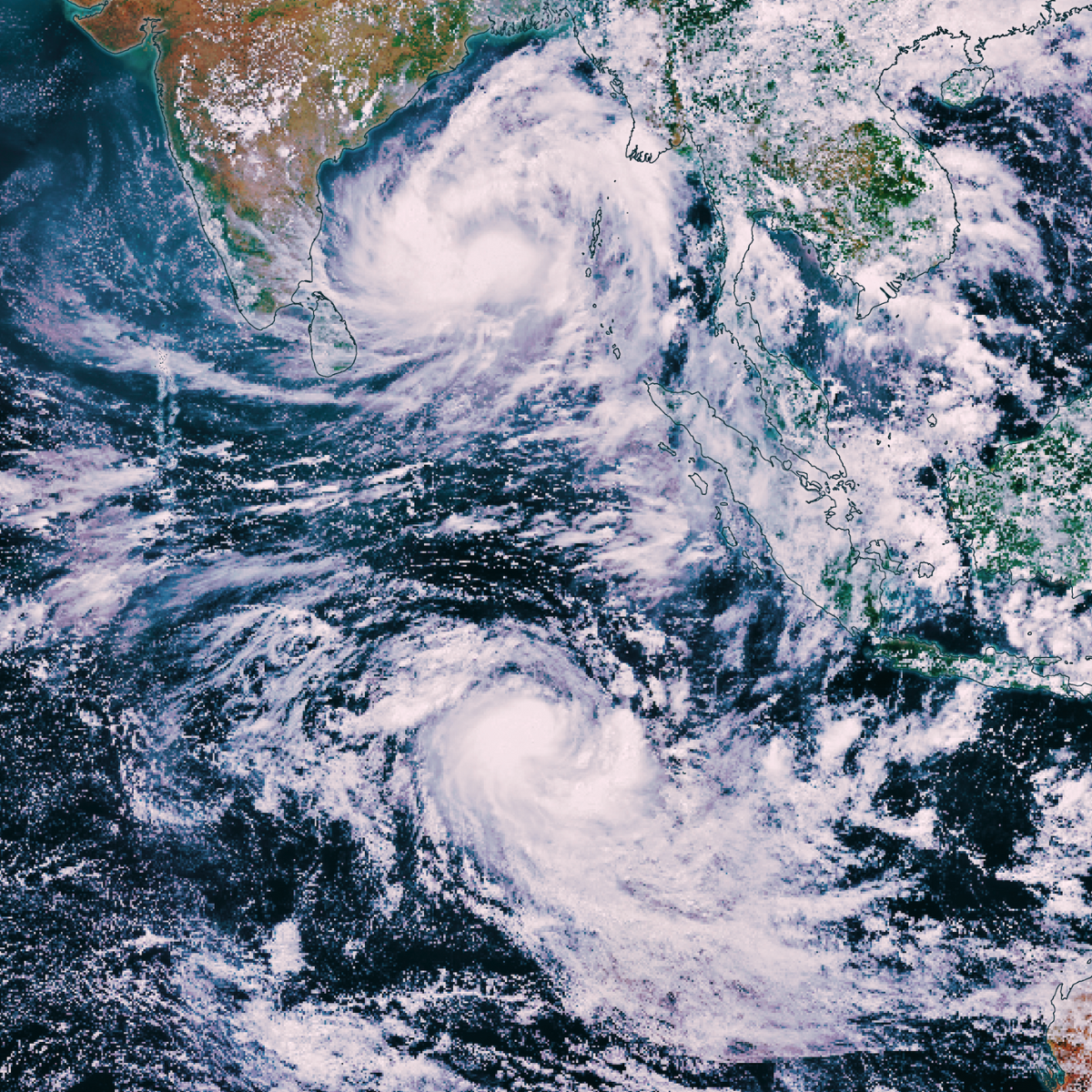
Upcoming Events

Happy Thanksgiving -- No Weathinar!
For all our US-based friends: have a wonderful Thanksgiving holiday!
Join us next week for an exciting Weathinar on sub-seasonal prediction with the Madden-Julien Oscillation.

MJ Who? The Most Important Predictor of Sub-Seasonal Weather Volatility
Sub-seasonal weather forecasts, from 1 week to 6 weeks of lead time, are some of the hardest to get right. But thanks to the Madden-Julien Oscillation, known as the MJO, there is good predictability over these time horizons, especially in fall, winter, and spring.
In this weekly Weathinar, we describe the physics of the Madden-Julien Oscillation, including its movement patterns over the tropical Indian Ocean, and its 30-day cycle of predictability. And then we explore the connections between the MJO and the Americas, and how a pattern of storminess in the Indian Ocean can drive temperature and precipitation anomalies a hemisphere away, from Boston to Rio de Janeiro to everywhere in between. We conclude by diving into the latest MJO forecast and its implications for weather around the world through the end of 2025. Register here.

Winter & Spring Weather Outlook (2025 - 2026)
In this edition of Planette’s weekly weather webinar, we review the long-range forecast over the next 6 months, focusing on the science and potential implications for financial markets.
We focus on the major Earth system drivers that drive long-range weather, including ENSO (El Niño / La Niña), the Quasi-Biennial Oscillation (QBO), and the Blob 2.0 over the North Pacific Ocean. And we show how each of these drivers tell us important details about forecasted conditions over the coming weeks and months. We also look at possible disruptions of the polar vortex leading to cold snaps over Eurasia and N America, and outlooks for cross-Pacific teleconnections of the Madden-Julien Oscillation, which impact temperature and precipitation patterns over the Americas. Register here.

Weather and the Mining Sector
Weather impacts a range of environmentally vulnerable industries, from construction to agriculture to insurance. But mining remains one of the most environmentally vulnerable of all, with significant volatility in operations, production, and transport linked to weather-related disruptions. In this week’s Weathinar, we review how weather patterns have impacted mining operations around and world, and look at implications for the mining sector in the current long-range forecast. Special guest Karen Chovan (Founder & CEO of Enviro Integration Strategies) joins us to provide insights on how weather has impacted the mining industry, and how the sector is coping with changing weather patterns on our warmer planet.
Register here: https://us06web.zoom.us/meeting/register/MGfr4suwSkW2Ru24GH5sZQ

How Volatility in Weather Patterns Drives Agricultural Markets Around the Globe
Our agricultural systems are exquisitely sensitive the changes in weather. Crop growth is impacted by the elements, from growing season temperatures, to rainfall duration and timing, to humidity levels that drive disease spread and winds that affect pollination.
As our planet becomes warmer, weather patterns shift and agricultural yields change. In some regions, our warming climate is becoming an opportunity for farmers; conditions become more optimal for some crops, and the growing season may lengthen, allowing for two harvests per year. In other regions, lack of rainfall or excessive growing season temperatures lead to major declines in agricultural yields as crop growth suffers.
In this Planette weather webinar, guest Dinesh Thogulua (agri-tech + trading) and I will discuss the ways that agricultural yield is sensitive to weather, and how understanding the long-range weather outlook can provide a leading view on soft commodities markets. REGISTER HERE!

Got Climate Change? How Weather Patterns Shift as our Planet Warms and Why it Matters
We all know that our planet is warmer than it was 75 years ago. But why are our economic systems and financial markets sensitive to climate change?
The answer lies in the weather: climate change drives major shifts in weather patterns around the world. And because weather drives financial markets, we see that changes in the weather also impact these same markets.
In this week’s webinar, we dive into the details: how shifts in the weather, from changes in the seasons, to changes in extremes, to changes in biomes, are driving changes across agriculture, fisheries, energy, insurance, supply chains, and more. We connect the science of climate to changes in weather patterns to movements in financial markets, from the near- to the long-term. Register here: https://us06web.zoom.us/meeting/register/nfqIgligQmeNkqq1jOMzlA

The Science of Long-Range Weather Forecasting
We all know that weather can be forecasted over the next 7 to 10 days. But how do we forecast weather over the next weeks and months? And how do we ensure accuracy in these long-range forecasts so they can be used for real-world financial decision-making?
In this week’s Weathinar, we provide an overview of how long-range weather forecasting differs from conventional 7-day weather forecasting, and delve into some of the 20+ years of scientific advances that allow us to see much further into the future than your weather app.
We then focus on key financial decision-making opportunities made possible by long-range forecasts – in energy, agriculture, logistics, mining, emergency management, and more. We highlight regions where long-range predictions are highly trustworthy, and regions where long-range predictions are much poorer due to both observational uncertainties and fundamental physics. We conclude with an overview of strategic insights on deploying long-range forecasts in the financial sector.
Register here: https://us06web.zoom.us/meeting/register/dcsqmkRTTx2PsMI0v-5x8A

How Weather Disrupts Global Supply Chains
Typhoons, intense monsoons, droughts, and cold snaps. Around the world, extreme weather can cause major disruptions to supply chains, wreaking havoc on global markets. From disk drives to semiconductor chips to iron ore to bananas, the effects of inclement weather on supply chains don’t need to come as a surprise. In this week’s Weathinar, guest Sadie Frank (Co-founder & CEO, N2EA) will join us to review the types of weather patterns associated with supply chain disruptions, and possible supply chain impacts over the coming fall and winter.

How the Ocean Drives the Weather
What do El Niño, The Blob, and a weakening Atlantic Meridional Overturning Circulation have to do with each other? They all represent major ways that changes in the ocean impact global weather patterns and the long-range weather outlook. In this week's Weathinar, we'll take a look at how anomalous patterns in ocean temperatures and circulation have impacted weather around the globe in the past, and how they are projected to impact the long-range weather outlook this coming fall and winter.

